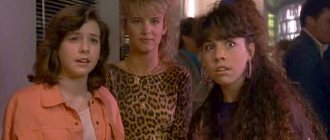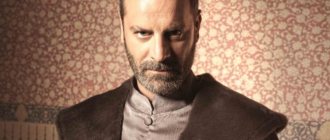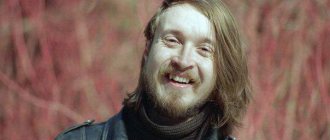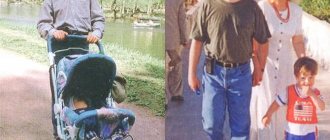Biography
Lewis Carroll was born in the village of Daresbury in the English county of Cheshire on January 27, 1832. His father was the parish priest, and he was involved in the education of Lewis, as well as his other children. In total, four boys and seven girls were born into the Carroll family. Lewis showed himself to be a fairly smart and quick-witted student.
Carroll was left-handed, which was not as calmly accepted by religious people in the nineteenth century as it is now. The boy was forbidden to write with his left hand and was forced to use his right, which caused psychological trauma and led to a slight stutter. Some researchers claim that Lewis Carroll is autistic, but there is no exact information about this.
Lewis Carroll
At the age of twelve, Lewis began studying at a private grammar school located near Richmond. He liked the teachers and classmates, as well as the atmosphere in the small educational institution. However, in 1845 the boy was transferred to the fashionable public school of Rugby, where great importance was attached to the physical training of boys and instilling in them Christian values.
Young Carroll liked this school much less, but he studied well there for four years and even demonstrated good abilities in theology and mathematics.
Lewis Carroll in his youth
In 1850, the young man entered Christ Church College at Oxford University. In general, he was not a very good student, but he still showed outstanding mathematical abilities. A few years later, Lewis received his bachelor's degree, and then began giving his own lectures on mathematics at Christ Church. He did this for more than two and a half decades: work as a lecturer brought Carroll good income, although he found it very boring.
Since educational institutions in those days were closely interconnected with religious organizations, upon assuming the position of lecturer, Lewis was obliged to take holy orders. In order not to work in the parish, he agreed to accept the rank of deacon, renouncing his powers as a priest. While still in college, Carroll began writing short stories and poetry, and it was then that he came up with this pseudonym (in fact, the writer’s real name was Charles Lutwidge Dodgson).
Place of birth England
The 19th century is famous for many geniuses, everyone knows one of them - Lewis Carroll.
His biography begins in the picturesque village of Daresbury, which was part of Cheshire. There were a total of 11 children in the vicarage of Charles Dodgson. The future writer was named after his father; he was born on January 27, 1832 and was educated at home until he was 12 years old. Then he was sent to a private school, where he studied until 1845 inclusive. He spent the next 4 years in Rugby. In this institution he was less happy, but showed brilliant success in the disciplines of mathematics and the word of God. In 1950 he entered Christ Church, and in 1851 he transferred to Oxford. At home, the head of the family himself taught all the children, and the activities were like fun games. To better explain the basics of counting and writing to young children, the father used objects such as chess and an abacus. Lessons on the rules of behavior were like cheerful feasts, where, through “tea drinking in reverse,” knowledge was crammed into children’s heads. When young Charles studied at grammar school, science was easy, he was praised, and learning was a pleasure. But in the subsequent study of science, the pleasure disappeared, and there was less success. By Oxford he was considered an average student with good but unused ability.
The Creation of Alice
In 1856, Christ Church College changed its dean. The philologist and lexicographer Henry Liddell, along with his wife and five children, came to Oxford to work in this position. Lewis Carroll soon became friends with the Liddell family and became their faithful friend for many years. It was one of the couple’s daughters, Alice, who was four years old in 1856, who became the prototype for the well-known Alice from Carroll’s most famous works.
First edition of the book “Alice in Wonderland”
The writer often told Henry Liddell's children funny tales, the characters and events of which he composed on the fly. One day in the summer of 1862, during a boat trip, little Alice Liddell asked Lewis to once again compose an interesting story for her and her sisters Lorina and Edith. Carroll got down to business with pleasure and told the girls an exciting tale about the adventures of a little girl who fell through the White Rabbit's hole into the Underground Country.
Alice Lidell - the prototype of the famous fairy-tale character
To make it more interesting for girls to listen to, he made the main character similar to Alice in character, and also added characteristic features of Edith and Lorina to some of the secondary characters. Little Liddell was delighted with the story and demanded that the writer write it down on paper. Carroll did this only after several reminders and solemnly handed Alice a manuscript entitled "Alice's Adventures Underground." Somewhat later, he took this first story as the basis for his famous books.
[edit] Alice and SRSG
Almost every line and every twist in the plotline of these works is in fact a subtle trolling of the author towards his university colleagues. Here you will find criticism of individual aspects of semantics, and endless recursions, including semantic ones, and an abyss of metaphysics. In the canonical edition, each paragraph of text is accompanied by three paragraphs of footnotes, full of dark, obscene humor. From this point of view, we can consider that the main theme of the work is the sharp cognitive dissonance that befalls the average sane person when confronted with the creations of mathematicians.
For example, when the caterpillar says to Alice: “If you bite on one side of a mushroom, you will increase, on the other, you will decrease,” she means that the mushroom, which is approximately a body of rotation and has no other symmetry, has only one clearly defined direction (axis of symmetry) and, accordingly, only two sides: bottom and top. And it is supposedly obvious that what was meant was “one side” - the cap of the mushroom, “the other” - the stem. If you consider only the circumference of the cap under the mushroom, as Alice did, by accidentally spreading her arms and describing half a circle with the help of , you can accidentally break off a piece from any “side” of the cap/mushroom, respectively, the opposite “side” will then become the opposite. There is an opinion that this is trolling by one of Carroll’s colleagues, whose use of the word “obviously” led others into many hours of wondering what he meant.
As an example of good rabbit mathematics, Alice, falling into a cylindrical hole leading to the country of the Antipodes and passing through the center of the Earth, remembers that she was chasing the White Rabbit in the Black Cylinder, the volume of which is calculated using the exact British formula V=PhD. Or, for example, Alice’s reasoning in the second book on the topic “I don’t know if you can drink mirror milk” is a stern hint at the interaction of matter with antimatter and their subsequent annihilation. (spoiler:
Moreover, the hint was made 28 years before the first mention of antimatter in physics
)
. Hard-core humanitarian connoisseurs of English paper and pen will be quite interested in the case of finding what's common between the Raven and the Writing Desk? Especially considering the time difference between subject and subject.
Overall, “Alice” is not exactly a fairy tale, but rather the collective unconscious of 19th-century English professors, expressed in a vivid fairy-tale form.
Some experts on the morals of the English professoriate of the 19th century even believe that this work, adjusted for Aesopian language, can well be considered documentary. There are references to turbulent youth, both obvious, such as the episode with the need to eat both purchased eggs (at Carroll’s alma mater, they gave two eggs for breakfast instead of one, because one almost always turned out to be rotten), and veiled (the mad tea party, for example, there is neither which is nothing more than a friendly drinking party of studios, which Alice accidentally came across).
However, everyone who has not been taught, including children, is invited to forget about the SRSG and simply and unpretentiously enjoy a good, suitable fairy tale.
Books
Lewis Carroll wrote his iconic works “Alice in Wonderland” and “Alice Through the Looking Glass” in 1865 and 1871, respectively. His style of writing books was not similar to any of the writing styles that existed at that time. As a very creative person, with a rich imagination and inner world, as well as an outstanding mathematician with an excellent understanding of logic, he created a special genre of “paradoxical literature.”
Illustration for the fairy tale “Alice in Wonderland”
His characters and the situations in which they find themselves are not at all intended to amaze the reader with absurdity and absurdity. In fact, they all follow a certain logic, and this logic itself is taken to the point of absurdity. In an unusual, sometimes even anecdotal form, Lewis Carroll subtly and elegantly touches on many philosophical issues, talks about life, the world and our place in it. As a result, the books turned out to be not only entertaining reading for children, but also wise fairy tales for adults.
Carroll's unique style appears in his other works, although they were not as popular as the Alice stories: "The Hunting of the Snark", "Sylvie and Bruno", "The Knot Stories", "Midnight Problems", "Euclid and His modern rivals", "What the tortoise said to Achilles", "Allen Brown and Carr".
Writer Lewis Carroll
Some argue that Lewis Carroll and his world would not have been so extraordinary if the writer had not consumed opium on a regular basis (he suffered from severe migraines and also still had a noticeable stutter). However, at that time, opium tincture was a popular medicine for many diseases; it was used even for mild headaches.
Contemporaries said that the writer was “a man with quirks.” He led a fairly active social life, but at the same time suffered from the need to meet certain social expectations and desperately longed to return to childhood, where everything was simpler and he could remain himself in any situation. For some time he even suffered from insomnia, and spent all his free time on numerous studies. He truly believed in going beyond the reality we know and tried to comprehend something more than the science of his time could offer.
Lewis Carroll: interesting facts
Lewis Carroll, English writer and mathematician, died on January 14, 1898. Diletant.media decided to remember the most striking stories related to him or his life.
1. After reading “Alice in Wonderland” and “Alice Through the Looking Glass,” Queen Victoria was delighted and demanded that the rest of the works of this wonderful author be brought to her. The queen’s request, of course, was fulfilled, but the rest of Dodgson’s works were entirely devoted to... mathematics. The most famous books are “Algebraic Analysis of the Fifth Book of Euclid” (1858, 1868), “Notes on Algebraic Planimetry” (1860), “Elementary Guide to the Theory of Determinants” (1867), “Euclid and His Modern Rivals” (1879), "Mathematical Curiosities" (1888 and 1893) and "Symbolic Logic" (1896).
2. In English-speaking countries, Carroll's tales rank third among the most cited books. The first place was taken by the Bible, the second by the works of Shakespeare.
Carroll was one of the first portrait photographers
3. The first Oxford edition of Alice in Wonderland was completely destroyed at the request of the author. Carroll did not like the quality of the publication. At the same time, the writer was not at all interested in the quality of publication in other countries, for example, in America. In this matter, he completely relied on the publishers.
4. In Victorian England, being a photographer was not at all easy. The process of photographing was unusually complex and labor-intensive: photographs had to be taken at extremely high shutter speeds, on glass plates coated with collodion solution. After shooting, the plates had to be developed very quickly. Dodgson’s talented photographs remained unknown to the general public for a long time, but in 1950 the book “Lewis Carroll – Photographer” was published.
5. During one of Carroll's lectures, one of the students had an epileptic attack, and Carroll was able to help. After this incident, Dodgson became seriously interested in medicine, and he acquired and studied dozens of medical reference books and books. To test his endurance, Charles attended an operation where a patient's leg was amputated above the knee. His passion for medicine did not go unnoticed - in 1930, the Lewis Carroll Children's Department was opened at St. Mary's Hospital.
In Victorian England, a child under 14 was considered asexual and asexual.
6. In Victorian England, a child under 14 was considered asexual and asexual. But communication between an adult man and a young girl could ruin her reputation. Many researchers believe that because of this, girls underestimated their age when talking about their friendship with Dodgson. The innocence of this friendship can also be judged by Carroll’s correspondence with his older girlfriends. Not a single letter hints at any love feelings on the part of the writer. On the contrary, they contain discussions about life and are completely friendly in nature.
7. Researchers cannot say exactly what kind of person Lewis Carroll was in life. On the one hand, he had a hard time making friends, and his students considered him the most boring teacher in the world. But other researchers say that Carroll was not shy at all and consider the writer a famous ladies' man. They believe that relatives simply did not like to mention it.
Lewis Carroll was a suspect in the Jack the Ripper case
8. Lewis Carroll loved to write letters. He even shared his thoughts in the article “Eight or Nine Words of Wise About Writing Letters.” And at the age of 29, the writer started a journal in which he recorded all incoming and outgoing correspondence. Over 37 years, the journal recorded 98,921 letters.
9. In addition to being accused of pedophilia, Lewis Carroll was a suspect in the case of Jack the Ripper, a serial killer who was never caught.
The real Alice had to sell 1 handwritten version of the book for £15,400
10. The exact date of that memorable boat ride on the Thames during which Carroll told his story about Alice is unknown. It is generally accepted that “Golden July Noon” is July 4, 1862. However, the Journal of the English Royal Meteorological Society reports that on July 4, 1862, 3 cm of rain fell per day from 10:00 am, with the main amount falling from 2:00 pm late at night.
11. The real Alice Liddell had to sell the first handwritten version of Alice's Adventures Underground for £15,400 in 1928. She had to do this because she had nothing to pay for the house.
12. There is Alice in Wonderland syndrome. During an acute attack of a certain type of migraine, people feel themselves or surrounding objects disproportionately small or large and cannot determine the distance to them. These sensations can be accompanied by a headache or occur independently, and the attack can last for months. In addition to migraines, Alice in Wonderland syndrome can be caused by a brain tumor or taking psychotropic drugs.
13. Charles Dodgson suffered from insomnia. Trying to escape from sad thoughts and fall asleep, he invented mathematical puzzles and solved them himself. Carroll published his “midnight tasks” as a separate book.
14. Lewis Carroll spent a whole month in Russia. He was, after all, a deacon, and at that time the Orthodox and Anglican churches were trying to establish strong contacts. Together with his theologian friend Lyddon, he met with Metropolitan Philaret in Sergiev Posad. In Russia, Dodgson visited St. Petersburg, Sergiev Posad, Moscow and Nizhny Novgorod, and found the trip exciting and educational.
Lewis Carroll spent a whole month in Russia
15. Carroll had two passions - photography and theater. He, being a famous writer, was personally present at the rehearsals of his fairy tales, showing a deep understanding of the laws of the stage.
16. During the time of Lewis Carroll, felt hat makers worked for a long time with mercury vapor. Mercury poisoning often resulted in symptoms such as slurred speech, memory loss, and tremors, which is reflected in the saying “Mad as a hatter.” This is why the Hatter from Alice in Wonderland, aka the Hatter, is presented as mad.
Mathematics
Charles Dodgson was indeed a gifted mathematician: perhaps this is partly why the riddles of his texts are so complex and varied. When the author was not writing his masterpiece books, he was often engaged in mathematical work. Of course, he did not rank with Evariste Galois, Nikolai Lobachevsky or Janusz Bolyai, however, as modern researchers note, he made discoveries in the field of mathematical logic that were ahead of his time.
Mathematician Lewis Carroll
Lewis Carroll developed his own graphical technique for finding solutions to logical problems, which was much more convenient than the diagrams used at that time. In addition, the storyteller masterfully solved “sorites” - special logical problems consisting of a sequence of syllogisms, the removal of the conclusions of one of which becomes a prerequisite for the other, while all the remaining premises in such a problem were mixed.
Photo
Another serious hobby of the writer, from which only his own fairy tales and heroes could distract him, was photography. The style of his photography is attributed to the style of pictorialism, characterized by a staged style of filming and editing of negatives.
Lewis Carroll loved photographing children most of all. He was well acquainted with another popular photographer of those times, Oscar Reilander. It was Oscar who made one of the best photographic portraits of the writer, which later became a classic of photography in the mid-1860s.
He was one of the outstanding photographers of his era
Alice Liddell in her best outfit. Photo by Lewis Carroll. 1858
Carroll's interest in photography, a new art in the mid-19th century, awoke in his youth. He achieved great success in photography and treated photography as a calling. The central genre in his work was the children's portrait. Carroll's technique is referred to as pictorealism, when photography emphasizes those features that bring it closer to painting and graphics of the late 19th and early 20th centuries. (impressionism, works of the Pre-Raphaelites, symbolism, art nouveau). Many of the literary works of the author of "Alice in Wonderland" are devoted to the theme of photography: "A Photographer's Day Off", "Unusual Photography", "Hiawatha at the Camera" (a parody of "The Song of Hiawatha" by Henry Longfellow) - about the hardships of life of a photographer doing "family » pictures. Carroll also wrote articles about photographic art and took part in exhibitions.
Personal life
The writer led a very active social life, including often being seen in the company of various representatives of the fair sex. Since at the same time he held the title of professor and deacon, the family tried in every possible way to reason with Lewis, who did not want to settle down, or at least hide the stories of his stormy adventures. Therefore, after Carroll’s death, his life story was carefully retouched: contemporaries sought to create the image of a good-natured storyteller who loved children very much. Subsequently, this desire of theirs played a cruel joke on Lewis’s biography.
Lewis Carroll and children
Carroll really loved children, including little girls, the daughters of friends and colleagues, from time to time in his social circle. Unfortunately, Carroll never found a woman on whom he could try on the status of “wife” and who would bear him his own children. Therefore, in the 20th century, when it became very fashionable to turn the biographies of famous people upside down and look for Freudian motives in their behavior, the storyteller began to be accused of such a crime as pedophilia. Some particularly ardent supporters of this idea even tried to prove that Lewis Carroll and Jack the Ripper are one and the same person.
No evidence for such theories was found. Moreover: all the letters and stories of contemporaries, in which the writer was presented as a lover of little girls, were subsequently exposed. Thus, Ruth Gamlen stated that the writer invited a “shy child of about 12” Isa Bowman to visit, while in reality the girl at that time was at least 18 years old. The situation is similar with Carroll’s other allegedly young girlfriends, who were in fact fully adults.
"Alice" by Lewis Carroll - a fairy tale for children and a puzzle for adults Editorial material
A very nice text, despite the abundance of factual errors.
At first he was known as an outstanding scientist
During his lifetime he was never considered an outstanding scientist. In fact, he never even received the title of professor (as an academic degree), and was a teacher all his life. Carroll’s favorite Euclidean geometry was considered to have been studied far and wide and did not arouse anyone’s interest, just like his works.
Despite his mediocre academic achievements, Dodgson showed extraordinary aptitude for mathematics and soon began earning money by lecturing. True, for this he had to take holy orders and a vow of celibacy.
Carroll had a choice - to follow in his father's footsteps and become a priest or become a mathematics teacher. He took holy orders and tried to read sermons, but his stuttering greatly hampered his efforts. Teaching was easier - lectures could be read in a monotonous, unemotional voice, and stuttering did not interfere in this case. In addition, at this time the post of dean became vacant, and this meant the opportunity to finally get on my feet financially.
And yes, the fictitious “vow of celibacy” would not have prevented Carroll from getting married. In the Catholic Church, lower clergy are allowed to do this. Did Carroll's priest-pope with his horde of offspring give him any ideas? ))
Most likely, the matter is completely different. Carroll is always described as a shy person. He was very embarrassed in the company of adults and serious people. And given his congenital stutter, he was often embarrassed to even speak.
Carroll's stuttering did almost disappear during meetings with children, but his catastrophic shyness is a myth. Carroll communicated a lot and willingly with people, often visited London, knew the bohemia there well (poets, theater-goers, artists), knew how to easily get along with people and photographed them at the first opportunity (try persuading a family you just met to stand motionless for 20 minutes while a picture is taken - and at this time it was necessary to entertain them with conversations). Even the great recluse Alfred Tennyson was able to get close to no one, namely Carroll; without him, we would never have seen photographs of the famous poet. Even Carroll's turbulent social life caused indignation among his God-fearing provincial relatives. And friendship with young actresses...
However, it is not known for certain whether Tenniel used at least some of Carroll’s recommendations when creating the drawings. Most likely, he was guided solely by his imagination.
It is known for certain that the hot-tempered choleric Tenniel was immediately enraged by Carroll’s request to make the illustrations similar to the photos. It is also known for certain that Carroll was not frightened by the outburst of anger and the two respectable gentlemen shouted at each other for a long time in the presence of many witnesses. However, it did not come to a fight, but an angry Carroll returned to Oxford with the intention of finding another artist. After cooling down, he allowed his friends to convince himself that it was Tenniel he needed. He allowed himself to be persuaded to take on the order again (he was promised a royal payment), but deliberately made Alice in his illustrations the complete opposite of the image that Carroll wanted.
And so on and so forth. In general, the hardware needs to be trained.











